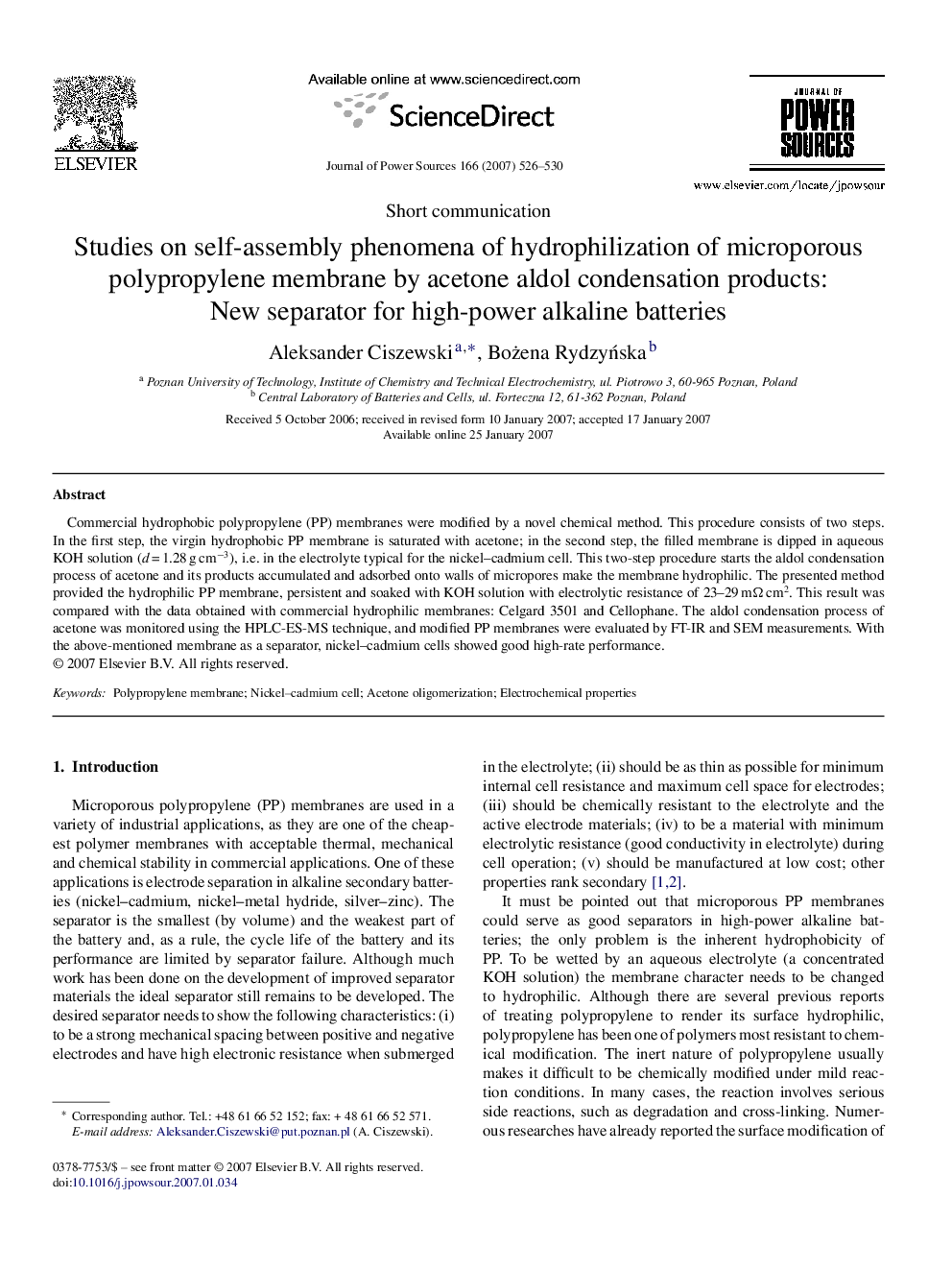| Article ID | Journal | Published Year | Pages | File Type |
|---|---|---|---|---|
| 1286704 | Journal of Power Sources | 2007 | 5 Pages |
Commercial hydrophobic polypropylene (PP) membranes were modified by a novel chemical method. This procedure consists of two steps. In the first step, the virgin hydrophobic PP membrane is saturated with acetone; in the second step, the filled membrane is dipped in aqueous KOH solution (d = 1.28 g cm−3), i.e. in the electrolyte typical for the nickel–cadmium cell. This two-step procedure starts the aldol condensation process of acetone and its products accumulated and adsorbed onto walls of micropores make the membrane hydrophilic. The presented method provided the hydrophilic PP membrane, persistent and soaked with KOH solution with electrolytic resistance of 23–29 mΩ cm2. This result was compared with the data obtained with commercial hydrophilic membranes: Celgard 3501 and Cellophane. The aldol condensation process of acetone was monitored using the HPLC-ES-MS technique, and modified PP membranes were evaluated by FT-IR and SEM measurements. With the above-mentioned membrane as a separator, nickel–cadmium cells showed good high-rate performance.
